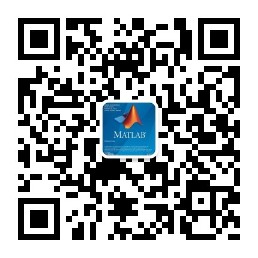博文
[转载]【电信学】【2018.09】5G网络中QoS提供的无线资源管理技术
||
本文为西班牙加泰罗尼亚理工大学(作者:Eftychia Datsika)的博士论文,共142页。
随着越来越多的移动应用、over-the-top(OTT)服务的出现和移动互联网连接的普及,为移动网络运营商(MNO)提供高质量服务(QoS)变得越来越具有挑战性。研究工作集中在开发创新的资源管理技术,并引入了长期演进高级(LTE-A)通信标准。新的商业模式使跨国公司能够整合其资源,从而使网络容量的增长具有可持续性。第五代(5G)移动网络将涉及不同能力和需求的技术及业务利益相关者,这些技术和需求可能会影响QoS的提供,需要高效的无线资源共享。对更高网络容量的需求引入了提高资源分配效率的新技术。用户设备终端(UE)之间的直接连接绕过LTE-A基础设施,减轻了网络过载。部分移动业务被放置到带外的设备到设备(D2D)连接(在未经许可的频谱中),从而能够在UE之间直接或通过UE中继进行数据交换。不过,移动运营商需要额外的频谱资源和基础设施。运营商间网络共享概念的出现推动了虚拟化的采用,虚拟化实现了网络切片,即在虚拟切片中动态分离资源(VS)。VS由不同的租户使用软件定义网络进行隔离管理,并包含定期分配给UE的核心和无线接入网络资源。当UE接入OTT应用时,产生由OTT服务提供商(OSP)确定的具有不同QoS需求和优先级的数据流。外包服务提供商的政策应在VS分配中加以考虑。商业模式(RRM)需要复杂的技术和资源管理(RRM)共存。为此,RRM是在一个复杂的生态系统中进行的。
当D2D通信涉及移动网络同时下载的数据时,LTE-A网络参数(资源调度策略、下行链路信道条件)可能会影响QoS。它也受到中继选择的影响,因为UE可能不愿意帮助未知的UE对,并且UE在移动应用中的社交关系可能影响D2D合作的意愿。因此,有效的介质访问控制(MAC)机制应该使用诸如网络编码(NC)之类的高级技术来协调D2D传输。当用户接入OTT应用时,移动运营商在RRM中不考虑外包服务提供商的政策,外包服务提供商不能应用流程优先化。当网络服务的等级问题最小化时,也会出现网络服务提供商(OSP)的中立性问题。由于OSP-MNO交互所需的时间和流等待资源的时间,OSP的干预可能会延迟数据流的容纳。
本文针对5G网络中OSP的带外D2D通信和VS分配的RRM问题提出了新的解决方案。本文提出了一种协作的D2D MAC协议,该协议在LTE-A网络参数的影响下,充分利用了D2D通信的NC机会,并对其吞吐量性能进行了分析。该协议提高了D2D的吞吐量和能量效率,特别是对于下行信道条件较好的UE。其次,我们在D2D MAC设计中引入了社会意识,提出了一种社会感知的协作式D2D MAC协议,该协议利用用户的社会联系来促进友好中继的使用,从而降低总能耗。针对面向OSP的RRM方法的不足,本文提出了一种基于匹配理论的流优先算法,该算法应用了OSP的网络中立性策略,并对其GoS和时延性能进行了分析。该算法在不影响OSP间公平性的前提下,保持了较低的开销和时延。我们的技术强调了在RRM设计中联合考虑不同技术和业务干系人所带来的QoS改进。
As numerous mobile applications and over-the-top (OTT) services emerge and mobile Internet connectivity becomes ubiquitous, the provision of high quality of service (QoS) is more challenging for mobile network operators (MNOs). Research efforts focus on the development of innovative resource management techniques and have introduced the long term evolution advanced (LTE-A) communication standard. Novel business models make the growth of network capacity sustainable by enabling MNOs to combine their resources. The fifth generation (5G) mobile networks will involve technologies and business stakeholders with different capabilities and demands that may affect the QoS provision, requiring efficient radio resource sharing. The need for higher network capacity has introduced novel technologies that improve resource allocation efficiency. Direct connectivity among user equipment terminals (UEs) circumventing the LTE-A infrastructure alleviates the network overload. Part of mobile traffic is offloaded to outband device-to-device (D2D) connections (in unlicensed spectrum) enabling data exchange between UEs directly or via UEs-relays. Still, MNOs need additional spectrum resources and infrastructure. The inter-operator network sharing concept has emerged motivating the adoption of virtualization that enables network slicing, i.e., dynamic separation of resources in virtual slices (VSs). VSs are managed in isolation by different tenants using software defined networking and encompass core and radio access network resources allocated periodically to UEs. When UEs access OTT applications, flows with different QoS demands and priorities determined by OTT service providers (OSPs) are generated. OSPs’ policies should be considered in VS allocation. The coexisting technologies, business models and stakeholders require sophisticated radio resource management (RRM) techniques. To that end, RRM is performed in a complex ecosystem. When D2D communication involves data concurrently downloaded by the mobile network, QoS may be affected by LTE-A network parameters (resource scheduling policy, downlink channel conditions). It is also affected by the relay selection, as UEs may not be willing to help unknown UE pairs and UEs’ social ties in mobile applications may influence willingness for D2D cooperation. Thus, effective medium access control (MAC) mechanisms should coordinate D2D transmissions employing advanced techniques, e.g., network coding (NC). When UEs access OTT applications, OSPs’ policies are not considered by MNOs in RRM and OSPs cannot apply flow prioritization. Network neutrality issues also arise when OSPs claim resources from MNOs aiming to minimize grade of service (GoS). OSPs’ intervention maydelay flows’ accommodation due to the time required for OSP-MNO interaction and the time the flows spent waiting for resources. This thesis proposes novel solutions to the RRM issues of outband D2D communication and VS allocation for OSPs in 5G networks. We present a cooperative D2D MAC protocol that leverages the opportunities for NC in D2D communication under the influence of LTE-A network parameters and its throughput performance analysis. The protocol improves D2D throughput and energy efficiency, especially for UEs with better downlink channel conditions. We next introduce social awareness in D2D MAC design and present a social-aware cooperative D2D MAC protocol that employs UEs’ social ties to promote the use of friendly relays reducing the total energy consumption. Motivated by the lack of approaches for OSP-oriented RRM, we present a novel flow prioritization algorithm based on matching theory that applies OSPs’ policies respecting the network neutrality and the analysis of its GoS and delay performance. The algorithm maintains low overhead and delay without affecting fairness among OSPs. Our techniques highlight the QoS improvement induced by the joint consideration of different technologies and business stakeholders in RRM design.
1. 引言
2. 项目背景与正在出现的资源管理问题
3. D2D通信的ACNC-MAC协议
4. 在带外D2D通信中集成社会意识的SCD2D-MAC协议
5. 匹配理论流优先算法
6. 结论与展望
更多精彩文章请关注公众号:
https://wap.sciencenet.cn/blog-69686-1263210.html
上一篇:[转载]【电力电子】【1990.10】一种50赫兹太阳能直流-交流逆变器
下一篇:[转载]【无人机】【2015.03】遥控无人机设计方法